- Car Model Introduction
- Car Functions
Mastering the Hunt for Your Ideal Used Car in Australia and Unveiling the Details of e-Power Drive Modes
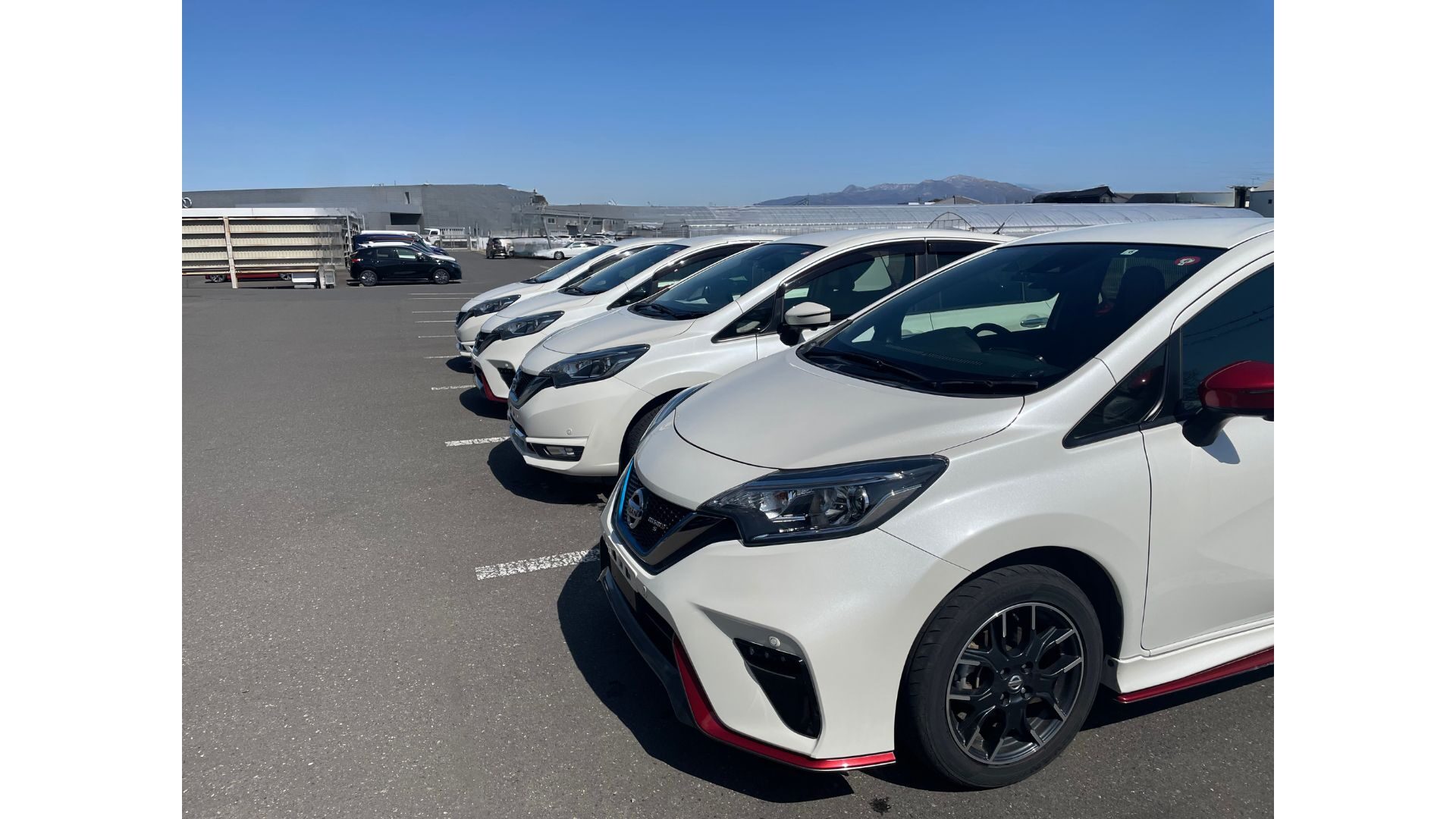
Embarking on the quest for the perfect used car in Australia, especially one equipped with the innovative e-Power technology, can be both exciting and daunting. This comprehensive guide aims to navigate you through the essential steps of identifying your needs and budget, understanding the intricacies of the used car market, and selecting a vehicle that not only meets your criteria but also offers an enhanced driving experience with e-Power drive modes.
Whether you’re a first-time buyer or a seasoned auto enthusiast looking for an environmentally friendly option without sacrificing performance, you’ll find invaluable insights and tips to make your journey smooth and successful. Let’s dive into the world of used cars in Australia, where practicality meets innovation on the road.
Clarifying Needs and Budget
Before embarking on your search for a used car, clarifying your needs and establishing a budget is crucial. Here are the points to consider at this stage:
Budget Setting: Determine your budget for purchasing a car, including not only the price of the car but also taxes, registration fees, and insurance.
Required Features: List the features and functions you need, such as car size, fuel efficiency, safety, entertainment systems, etc.
Driving Environment: Choose a car suitable for Sydney’s climate and road conditions. An all-wheel drive may be advantageous in rainy areas.
Resale Value: Consider the resale value of the used car. It’s wise to choose a model that retains its value for future sale.
By completing this step, you can clearly define the characteristics and price range of your desired used car, saving time and effort.
Researching the Used Car Market
Researching the used car market is a vital step towards success. The following points are related to market research:
Price Research: Research the price range of cars within your budget. Prices for the same model can vary in Australia’s used car market.
Comparing Models: Compare multiple models to find the best option that meets your needs. Checking reviews and ratings is also recommended.
History Reports: Obtain the history report of the used car to check for accident history and maintenance records, which are indicators of reliability.
Dealers and Private Sellers: Consider cars from both dealers and private sellers. Understand the advantages and disadvantages of each to broaden your options.
Market research helps gather information to find the right car model and seller, preparing you to make a better choice.
Selecting a Reliable Dealer
Choosing a reliable dealer is critical in the used car purchasing process. Here are guidelines for finding a trustworthy dealer:
License and Reputation: Verify that the dealer has a valid license and check the reputation and reviews from other customers.
Warranty and After-Sales Service: Ask about the warranty and after-sales service offered by the dealer. Ensure you understand the warranty period and coverage to secure support in case of trouble.
Price Negotiation: When negotiating the price, determine if it’s fair. Compare with other sellers to ensure you’re getting the car at a suitable price.
Detailed Information Provision: Request detailed information about the car from the dealer. Accurate information about the car’s history and condition is essential. Roundabout Australia provides detailed information online.
Choosing a reliable dealer ensures a smooth process in purchasing a used car.

Nissan Note Hybrid e-POWER engine compartment
Contributions of Hybrid Cars to the Environment
Hybrid cars are known for their significant contributions to the environment. Here are the details on how hybrid cars contribute:
Lower Emissions: Hybrid cars produce fewer emissions than gasoline cars, reducing air pollution and helping protect Sydney’s beautiful natural environment.
Improved Fuel Efficiency: By combining an engine and electric motor, hybrid cars consume less fuel, saving petroleum resources and reducing carbon dioxide emissions.
Eco Mode: Hybrid cars come with an eco mode that optimizes fuel efficiency by adjusting the combination of the engine and electric motor.
Noise and Vibration Reduction: Hybrid cars often run quietly and smoothly since the engine stops in many situations, contributing to the reduction of noise pollution in urban environments.
Hybrid cars are an excellent choice for eco-friendly and economical driving in Sydney, especially for those who prioritize environmental considerations.
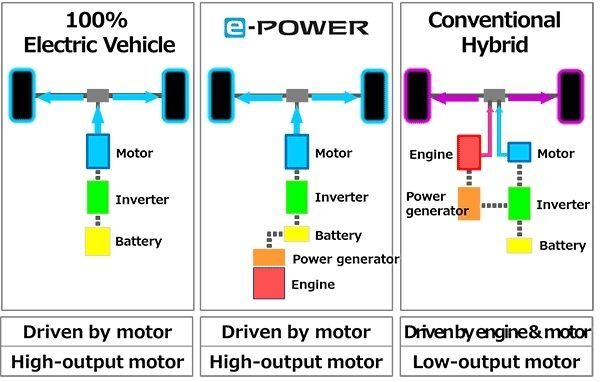
The Basics of e-Power
e-Power is a notable technology in hybrid cars that enhances both the car’s performance and fuel efficiency. Here are the basics of e-Power:
Electric Motor: e-Power features an electric motor that works in conjunction with a gasoline engine, providing propulsion and saving fuel.
Energy Regeneration: e-Power recovers energy during braking or deceleration, storing it in the battery. This energy is then supplied to the electric motor during acceleration, contributing to improved fuel efficiency.
Drive Modes: e-Power offers three drive modes: Eco, S (Smart), and Normal, allowing for optimal performance and fuel efficiency depending on the driving situation.
Environmental Contribution: Using e-Power minimizes fuel consumption and emissions, making it an environmentally friendly option that helps protect Sydney’s natural beauty.
Understanding e-Power enables you to fully utilize this technology when purchasing a used car, achieving eco-friendly and economical driving.
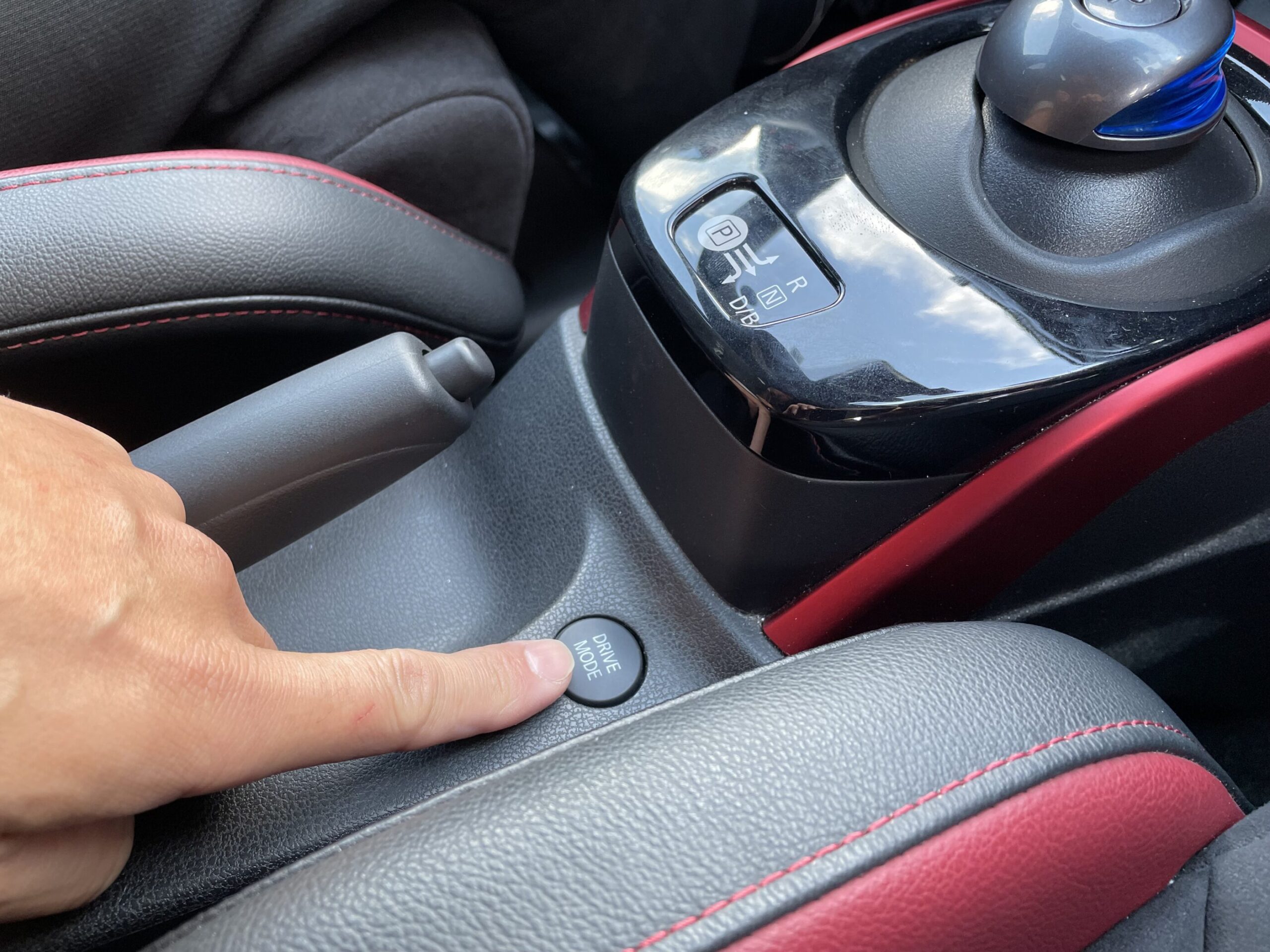
Driving mode selector switch
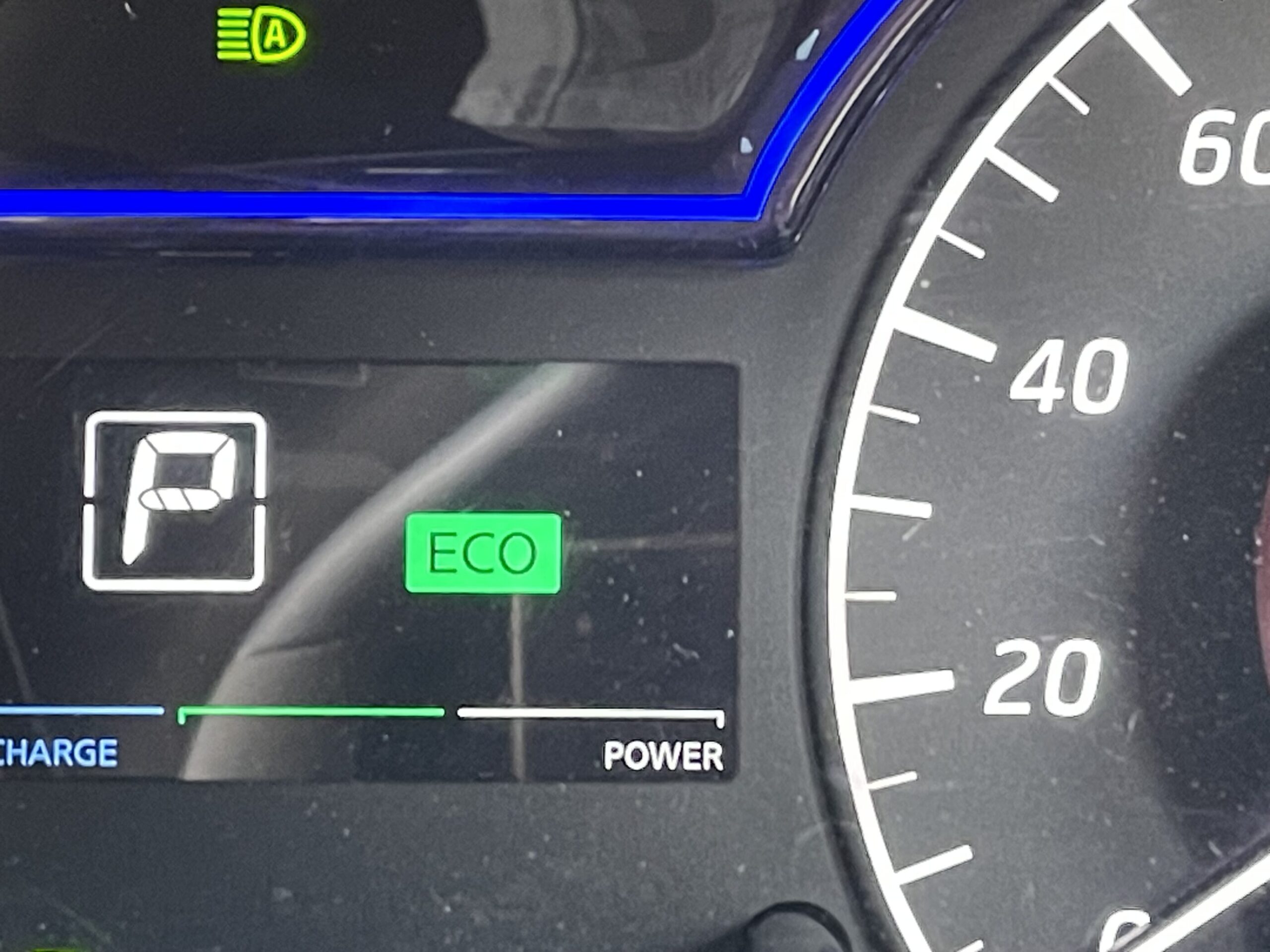
Eco mode Lamp
Eco Mode
Basic Characteristics
Eco Mode is designed to maximize fuel efficiency in e-Power vehicles. Here are the key features of Eco Mode:
Fuel Efficiency Optimization: In Eco Mode, the output of the engine and electric motor is optimized, significantly improving fuel efficiency and reducing environmental impact.
Quiet Operation: Eco Mode often allows the car to operate on the electric motor alone, resulting in quieter driving. This mode is ideal for urban or residential areas.
Energy Recovery During Deceleration: Eco Mode enhances energy recovery during deceleration, providing a greater braking force and recharging the battery more efficiently. This minimizes energy waste and contributes to better fuel economy.
Optimal Usage Scenarios
Eco Mode is best used in scenarios such as:
Long-Distance Driving: For long drives or highway travel, Eco Mode can maximize fuel efficiency, making it suitable for extended trips.
Quiet Environment Needs: In areas where a quiet driving environment is necessary, such as residential areas or during nighttime driving, Eco Mode is appropriate.
Fuel Efficiency Priority: When maximizing fuel efficiency and environmental consideration are key priorities, Eco Mode is the optimal choice.
Eco Mode provides a comfortable and quiet driving experience while maximizing fuel efficiency.

Driving mode selector switch
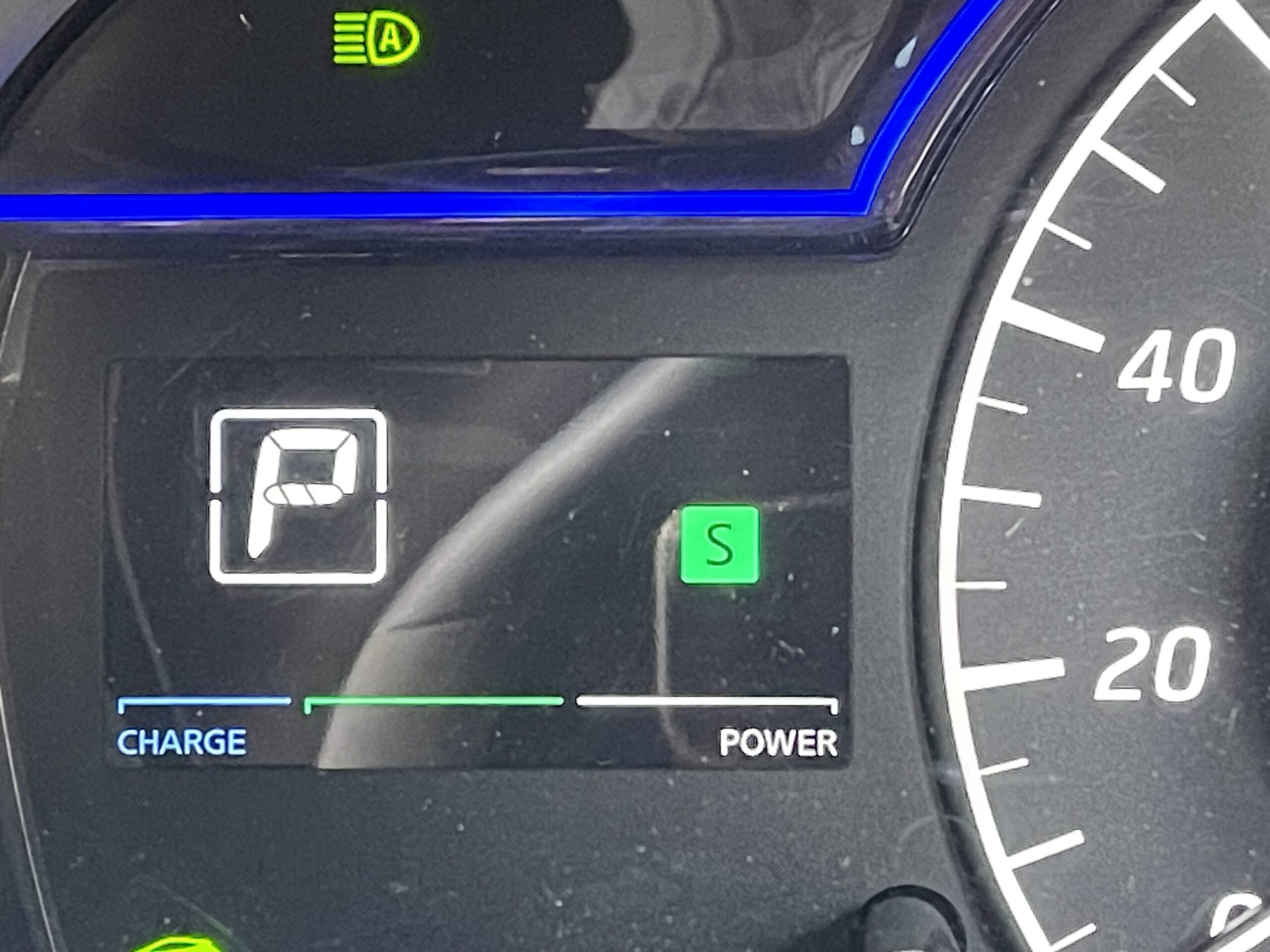
S (Smart) Mode Lamp
S (Smart) Mode
Basic Characteristics
S Mode is designed for those who enjoy engaging driving in their e-Power vehicle. Here are the details of S Mode:
Enhanced Acceleration and Deceleration: S Mode leverages the electric motor for quick acceleration while maintaining high deceleration force, suitable for overtaking on highways or quick starts. It offers sporty driving experiences, especially on winding roads or hills.
Tips for Improving Fuel Efficiency
To effectively utilize S Mode:
Use on Appropriate Roads: S Mode is best suited for highways or open roads. Be mindful of safety and only use this mode when conditions allow.
Switch According to Situation: While S Mode provides high output, it’s not necessary for all driving situations. Use it to enhance driving enjoyment when appropriate.
S Mode is a choice for drivers seeking a dynamic driving experience, offering both sportiness and efficiency.

Driving mode selector switch
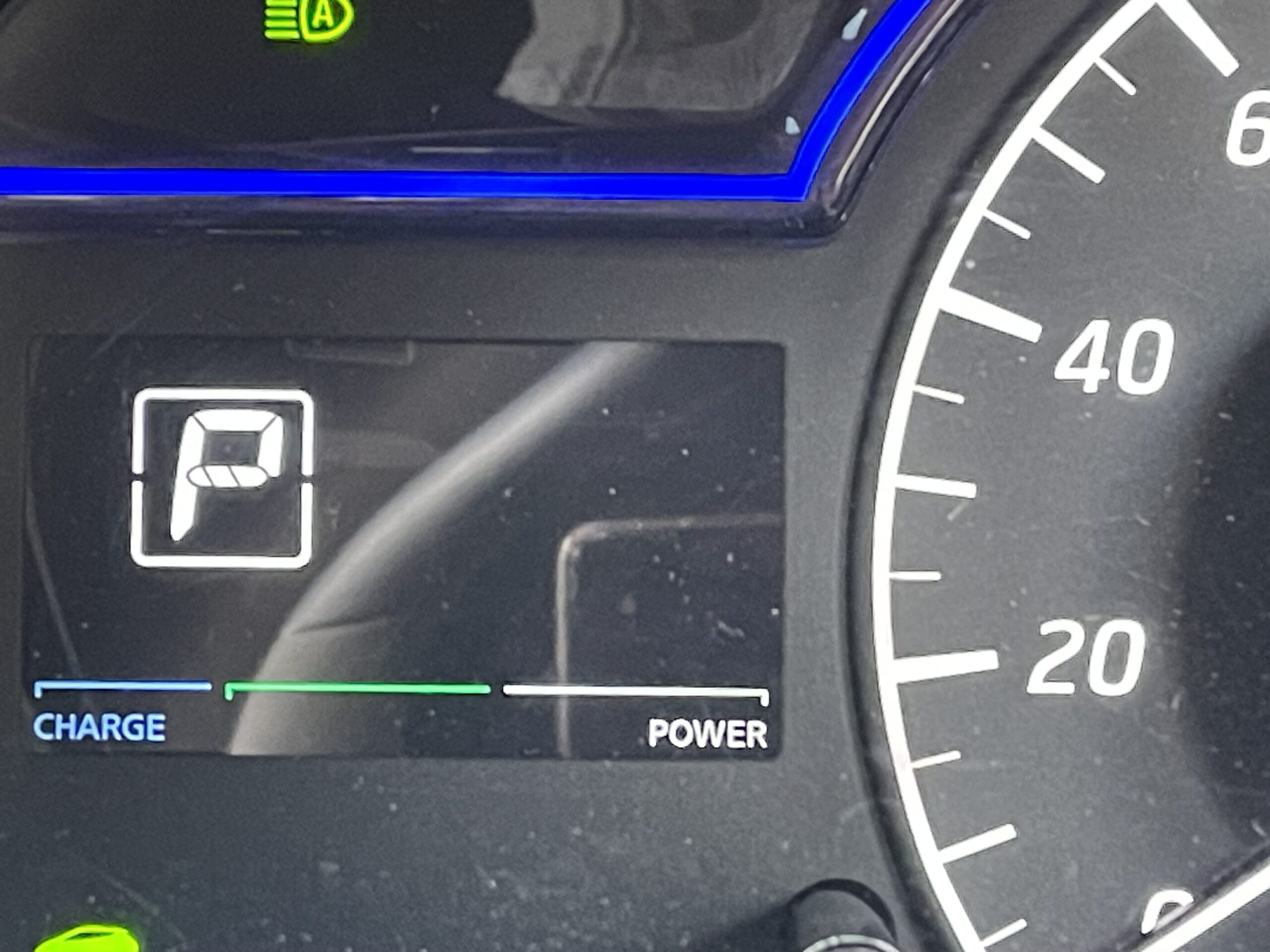
Normal Mode
Normal Mode
Basic Characteristics
Normal Mode offers a balanced driving experience in e-Power vehicles. Key features include:
Balance of Fuel Efficiency and Performance: Normal Mode adjusts the output of the engine and electric motor for a balance between fuel efficiency and driving performance. It provides an efficient drive without prioritizing fuel economy as much as Eco Mode, making it suitable for everyday driving situations.
Energy Recovery During Deceleration: While not as aggressive as Eco or S Modes, Normal Mode still recovers energy during deceleration, recharging the battery and contributing to improved fuel efficiency.
Optimal Usage Scenarios
Normal Mode is ideal for:
Commuting and Daily Driving: Suitable for routine tasks such as commuting, shopping, or school runs, where general driving performance and efficiency are desired.
General Fuel Efficiency Concerns: When seeking a good balance between performance and fuel efficiency without the specific focus of Eco Mode, Normal Mode is an excellent choice.
e-Power’s ability to automatically control driving modes with minimal pedal adjustments simplifies speed control, making acceleration and deceleration smoother and more intuitive. This ease of operation, combined with the smooth acceleration provided by the electric motor, distinguishes e-Power from traditional hybrids and enhances the driving experience while promoting fuel efficiency.
Checking Vehicle History and Maintenance Records
When purchasing a used car, verifying the vehicle’s history and maintenance records is essential. This ensures you’re making a well-informed decision:
Vehicle History Check: Investigate any past accidents or repairs. If there were accidents, verify that repairs were properly conducted.
Owner History: Research the frequency of ownership changes. Frequent changes might indicate underlying issues.
Maintenance Records: Access and review maintenance records to ensure regular servicing was conducted, which can prevent future repairs or replacements.
Points to Note During Test Drives
Always conduct a test drive before finalizing your purchase. Pay attention to:
Engine Noise: Listen for any unusual noises from the engine that may indicate the need for repairs.
Brakes and Handling: Test the effectiveness of the brakes and the car’s handling, especially during sudden stops or turns.
Vibrations and Odors: Be aware of any vibrations or unpleasant odors, which could indicate problems.
These checkpoints help evaluate the car’s condition during the test drive, aiding in a careful and informed purchase decision for a used car.
Making a significant investment in a used car necessitates a meticulous examination and thoughtful consideration. Here’s how to continue ensuring a wise purchase:
Considering Sydney's Climate When Choosing a Car
Sydney’s climate is generally mild, featuring distinct seasons, which should influence your car selection. Considerations include:
Sun Exposure: With abundant sunshine, vehicles with UV-protective glass or sunroofs can offer added protection against sun damage.
Rainy Season: During the wetter months, cars with traction control and ABS are more advantageous for safer driving in the rain.
Heating and Cooling Systems: Given the hot summers and cool winters, choosing a car with efficient air conditioning and heating ensures year-round comfort.
Fuel Economy: For the long distances commonly driven in Sydney, fuel-efficient cars, particularly hybrids, are popular for their cost savings.

Conclusion: Enjoying the Drive with Your Ideal Used Car and e-Power Modes
Finding your ideal used car in Sydney and understanding the benefits of e-Power drive modes can significantly enhance your driving experience. By thoroughly vetting the vehicle’s history and maintenance records and taking note of important factors during test drives, you can make an informed decision. Furthermore, considering Sydney’s climate and how it affects your car choice can lead to a more satisfactory purchase.
e-Power, with its distinct driving modes—Eco, S (Smart), and Normal—offers versatility for various driving scenarios, from fuel-efficient long-distance journeys to dynamic, sporty adventures. Its electric motor provides smooth acceleration, making for an enjoyable ride that combines performance with environmental friendliness.
As you embark on the journey to find the perfect used car, remember that understanding these key aspects ensures not just a vehicle that meets your needs but also one that contributes positively to the environment and offers enjoyable driving for years to come.
Popular

- Japanese Used Car
- Blog
The Pitfalls of Purchasing Imported Japanese Used Cars
27 February 2024

- Blog
Your Complete Guide to Buying a Used Car in Australia: From Pre-Purchase Inspection to Post-Purchase Maintenance
01 October 2024
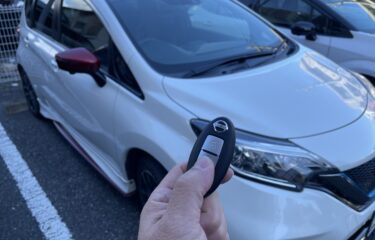
- Car Functions
- Blog
Smart Key Solutions: Battery Replacement and Troubleshooting
23 March 2024

